Information Processing | Chapter 7 | 8th Maths - SET - Game | 8th Maths : Chapter 7 : Information Processing
Chapter: 8th Maths : Chapter 7 : Information Processing
SET - Game
SET - Game
Any game
that uses features can be used to stimulate logical thinking and it provides an
interesting and challenging context for exploring ideas in discrete mathematics.
Now, let
us learn about a SET game
A SET game
proves to be an excellent extension for activities that involve organizing the objects
by attributes. The SET game builds the cognitive, logical, spatial
reasoning as well as visual perception skills.
The SET game
is a puzzle that uses cards which have four features on them. They are shapes, colours,
shades and the number of shapes.
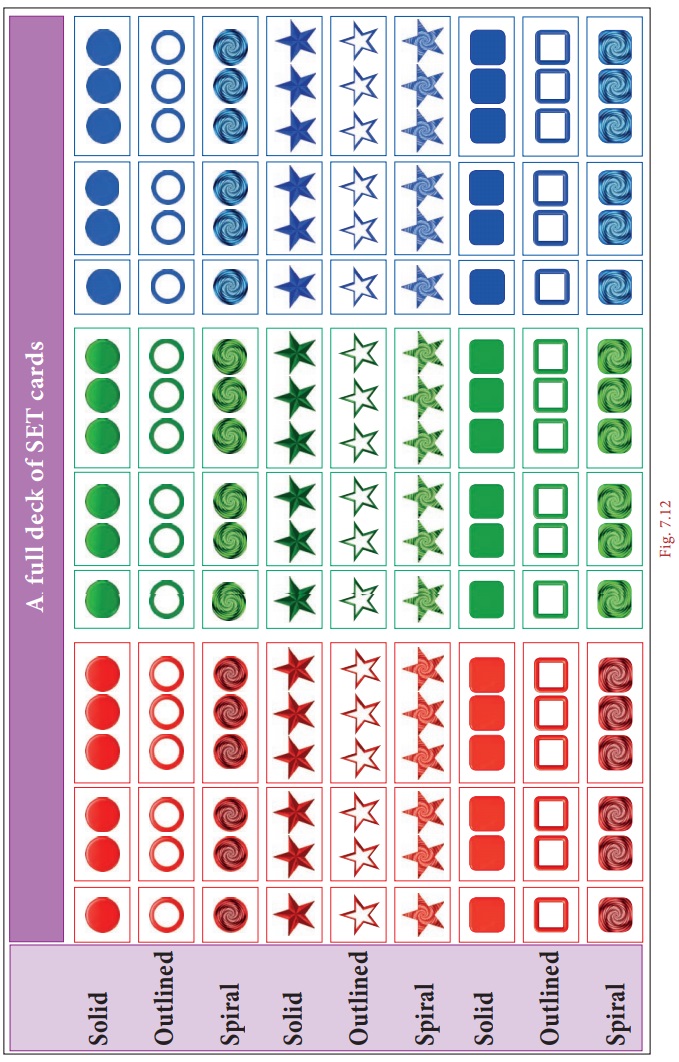
In one full
deck of SET
cards, there are 3 different shapes:
circle, star, square and in 3 different colours:
red, green, blue. 3 Each of these 9 cards (3 shapes × 3 colours) have 3 different shades: solid, outlined, spiral
and also they can be paired 3 with different
numbers: one, two and three. So there are totally 81 cards (3 shapes × 3 colours × 3 shades × 3numbers) in the deck as shown in
Fig. 7.12.
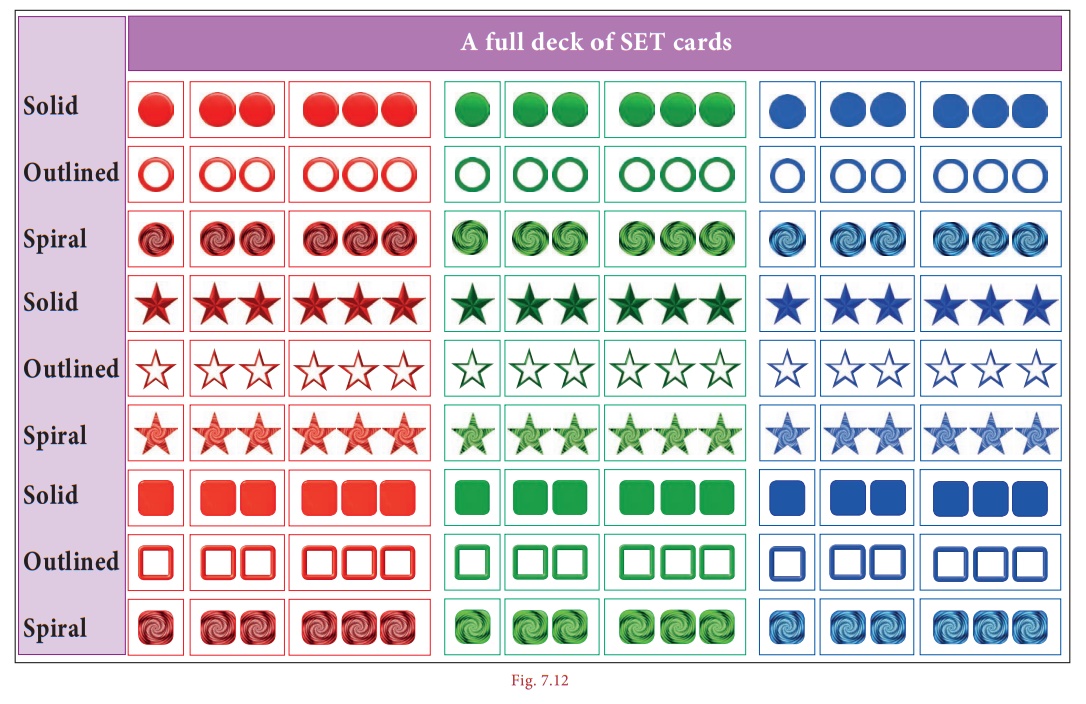
A SET which
consists of three cards should satisfy
all the four following conditions:
(i) All the three cards have the same shape or have three different
shapes.
(ii) All the three cards have the same colour or have three different
colours.
(iii) All the three cards have the same shade or have three different
shades.
(iv) All the three cards have the same number or have three different numbers.
Situation:
The teacher
displays 12 cards as shown in Fig. 7.13
and explains how to form a SET using these 2 cards ![]() and
and  taken from them. Now, follow the step by step procedure to figure out the third
card to complete this SET is as follows.
taken from them. Now, follow the step by step procedure to figure out the third
card to complete this SET is as follows.
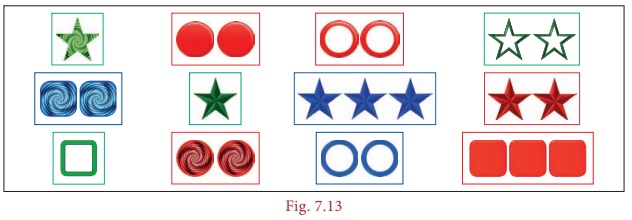
Remember,
a SET
consists of 3 set of cards.
STEP 1: If you look at the shape
then, one is star ![]() and the
other one is also star.
and the
other one is also star.  These two cards have the same shape.
So, the last card also should have the same
shape.
These two cards have the same shape.
So, the last card also should have the same
shape. 
STEP 2: If you look at the colour then, one is green ![]() and the other is red
and the other is red  These
two cards have different colours. So,
the last card also should have a different colour that is blue.
These
two cards have different colours. So,
the last card also should have a different colour that is blue. 
STEP 3: If you look at the shade
then, one is solid ![]() and
the other is also solid
and
the other is also solid  These two
cards have the same shade. So, the last
card also should have the same shade.
These two
cards have the same shade. So, the last
card also should have the same shade. 
STEP 4: If you look at the number then, one star card is green solid ![]() and the other has two star red solid cards
and the other has two star red solid cards  So, the last
card also should have a different number
three blue cards.
So, the last
card also should have a different number
three blue cards.  Therefore
these three set of cards have different numbers and different colours with same
shape and shade.
Therefore
these three set of cards have different numbers and different colours with same
shape and shade.
Finally, ![]()


Shape : All same ✓ Colour : All different✓
Shade : All same ✓ Number : All different ✓
Now, this completes the rules for a SET.
Now, the
teacher asks the students to find two more SETs from Fig.7.13. Let us check the SET again.
1. 
Shape : All same ✓ Colour : All same ✓
Shade : All different ✓ Number : All same ✓
Yes, This
is a SET.
2. 
Shape : All different ✓ Colour : All different ✓
Shade : All different ✓ Number : All different ✓
Yes, This is a SET.
Again , the
teacher makes an arrangement of cards and asks them to check whether, it forms a SET?
3. 
Shape : All same or all different × Colour : All same or all different ×
Shade : All same or all different × Number : All same or all different ×
No, this is not a SET.
Since, the
above SET
does not complete the SET rule.
Thus,we come
to know a SET
consists of 3 set of cards in which each
individual feature is either all same on each card or all different on each card.
Activity
Choose the correct card to complete the perfect SET. One is done for you.

1. Answer: (iii) ; 2. Answer: (ii) ; 3. Answer: (ii) ; 4. Answer: (i) ; 5. Answer: (ii)
Try these
1. Find any five SETs among these set of cards
(repetition of cards allowed).
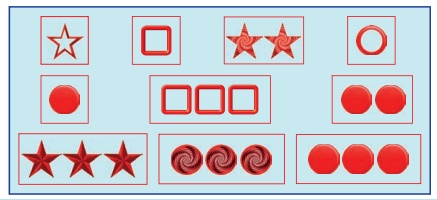
Solution:
(i) (a), (c), (h)
(ii) (e), (g), (j)
(iii) (a), (b), (d)
(iv) (f), (i), (j)
(v) (f), (i), (h)
2. This is an example for a magic square in SETs.
Can you make another two?
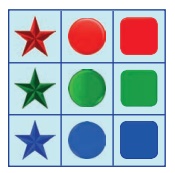
Solution:
Repeat one square with every thing 2 another square with
everything 3.
Related Topics